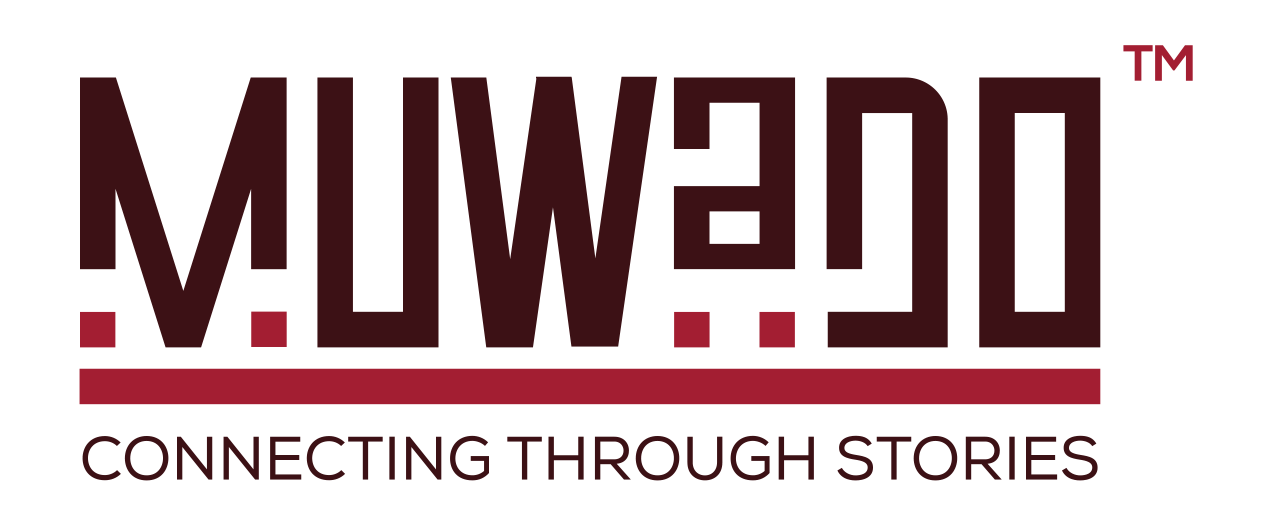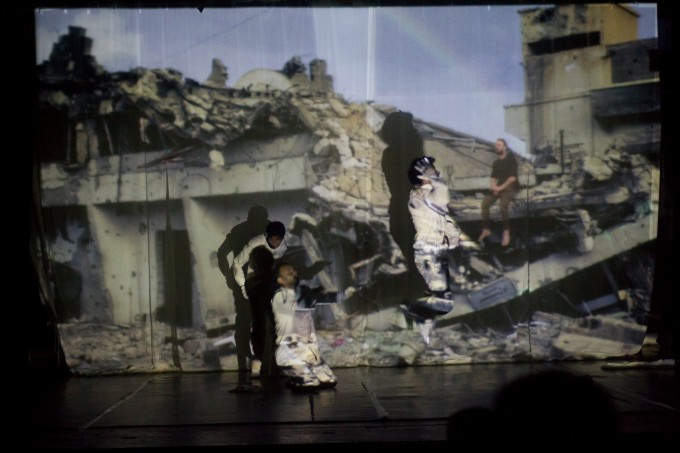Last year, I was blogging for the Kampala International Theatre Festival and this is a review of one of the plays. This originally appeared on their blog and I’m reposting it here as my submission for the 3rd day of the #UgBlogWeek that’s currently ongoing because, coincidentally, the 2016 edition of KITF starts today. So, if you can, make some time and drop by Ndere Centre to catch some of the amazing plays that will be showing till Sunday. The full program can be found on their website here.
*****
I entered the theatre performance, Body Revolution by Mokhallad Rasem without reading the blurb. Big mistake.
To begin, there was a technical glitch which went on for what must have been about 5 minutes but felt like an hour. After Assimwe Deborah, one of the festival organisers, had announced the start of the production, lights went out. Sounds of what I thought was a strong wind with the tingling of bells intermixed started playing, and kept on playing, and didn’t stop playing. All this time we were in darkness.
This must be one of those things I’m not bright enough to get, I thought to myself. Like when an artist shows you a blank piece of paper, or maybe one with just one line running across it, and everyone is oohing and aahing about how magnificent it is, and how the price tag of Ug shs 5m is such a bargain for it, and you are left feeling inadequate because you don’t get it. Or that joke about how Kanye West will one day release an album with no music and convince his fans to imagine the music…yeah, this felt like one of those moments.
And everyone else in the audience seemed to being paying rapt attention to the darkness on the stage and the sound of wind rushing through our ears. I wanted to get my phone out and text one of my friends who fully understands theatre to ask them if they could decode what was happening, but because of the darkness, I knew this would give away my ignorance, or communicate to everyone else that I wasn’t interested enough. Then another worrying thought crossed my mind, I was supposed to be live tweeting happenings at the festival. How was I supposed to post a picture of this darkness to the timeline? How would I even caption that? I decided to abandon anything to do with my phone.
Eventually, someone crept by me, heading for the area where the projector was located and started fidgeting with it. He managed to bring it to work and some visuals appeared on the stage. Then the lights went on and a lady appeared behind us, breathlessly telling us that there had been a glitch with the projector and we should ignore anything we’d just witnessed. Well, phew. So dramatic! I was half expecting her to be part of the production, and burst out into song, or something. Everyone else in the audience chuckled, but I could see some faces that looked like they had been as clueless as me. The people that had watched the production on its first showing two days before looked smug, probably because they knew what had been going on all along. I wanted to hate on their smugness, but I was just happy that I wasn’t alone in my ignorance.
The production was restarted and this time, the darkness and wind lasted for a few seconds before it transitioned into visuals projected on the stage curtains accompanied by enchanting music. Three characters appeared from the curtains in slow motion. I didn’t notice them at first because they were covered in white from head to toe, and because the images that were being projected onto the stage kept on changing, they looked like they were part of the reel. This one was a clever production. I tuned out everything else and focused all my brain cells on following what was going on.
Body Revolution from Toneelhuis on Vimeo.
The three characters started moving around the stage in well synchronized, yet seemingly random motions. At one point they were walking around, then they’d be violent body shaking, several zombie-like movements, then they were throwing themselves on the ground repeatedly, there was also a very bromance group hug at a certain point, aww…. All this time, the music kept on changing tempo, rising and falling and taking us on a rollercoaster of feelings.
The video being projected had images that kept on fading in and out of each other. 2 minutes into the production, I noticed that the images were photos taken from various conflict areas. The scenes included stark desolated buildings, bleak landscapes littered with bodies, bombed structures, protests, prison camps and many which captured the oppressors and oppressed from these conflicts in different poses depicting the power play at the moment. At a certain point, the images became animated. The video had the same performers who were on the stage emerging from poses some of the people in the image were assuming, usually the oppressed, and then transitioning smoothly to agitated dance moves.
The three men on the stage, who had their faces revealed now, seemed like they were moving in sync to the movements from the video at certain points, and then had completely different motions the rest of the time. My eyes were conflicted now, follow what is going on the screen or follow what the dancers are doing? You know you are hooked when you start envying chameleons whose eyes have the ability to look in different directions at the same time.
Soon after this, the performers on stage disappeared behind the curtains and then re-emerged, dragging the curtains behind them, in slow motion. I doubt my attempts to describe what was happening onstage do it any justice. This is one of those things you really need to have seen with your own eyes. By this point, I’d already accepted that I was unable to interpret what was going on. I wasn’t smart enough. I really should have read the blurb. All I had to go on was the title, Body Revolutions, and I was unable to decipher exactly what revolution the bodies on stage where going through. But I was getting a visual feast, albeit one of sadness and suffering. This performance was good to look at. Sadly, it had to come to an end, and boy did we clap those hands of ours.
We moved on to the Q&A session and this is when I finally got some answers and much-needed clarity. This was a play about how the body reacts to war and conflict situations. The three actors on stage were from Iraq, Iran and Morocco, and the director had chosen to work with them because of their backgrounds and what had happened in their countries as a result of the Arab Spring that started in December 2010 when a Tunisian street vendor set fire to himself, resulting in a wave of (r)evolutions.
The production was, therefore, trying to explore answers to the following questions; what effects do images from areas of conflict have on performers with roots in the Middle-East and, in extension, the audiences they perform to? How, as an expat/immigrant, do you process the information that comes to you from those who stayed behind and were unable to escape to the safety of another country like the performers did? How does the body react to violence and fear? When creating the video, they’d started with images from the Arab Spring, but eventually ended up adding images from wars and conflicts from all over the world to give the production a universal feel.
After listening to the audience questions, cast answers and how the play affected people that understood what it was about from the start, I really started appreciating the brilliance of it all. I wanted to re-watch it now so I could better appreciate it, but unfortunately, this was the final day of the festival and the final showing of this production.





